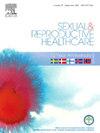“It didn’t turn out as I imagined” − Women’s lived experiences of giving birth to a child born in a persistent occiput posterior position
IF 1.7
3区 医学
Q3 PUBLIC, ENVIRONMENTAL & OCCUPATIONAL HEALTH
引用次数: 0
Abstract
Objective
To explore women’s experience of giving birth to a baby born in a persistent occiput posterior position. The impact of fetal position could significantly affect women’s experiences. There have been limited studies conducted regarding this phenomenon. In this study, particular attention is given to the persistent occiput posterior position. Gaining a deeper understanding of the childbirth experience in relation to the persistent occiput posterior position of the fetus can offer valuable insights for providing appropriate support during childbirth.
Methods
In-depth interviews were conducted with 12 women between July 2021 and May 2022. The data were subsequently analyzed using interpretive phenomenology.
Results
The essence of the women’s lived experience was that childbirth did not turn out quite as they imagined. The essence emerged from two themes, “An unexpected course of childbirth” and “Managed to take command of the situation”. The expectations women hold before childbirth differ from the experiences they encounter afterwards. They experienced loss of control and an unexpected pattern of contractions and progress of birth. Following the birth, they had inquiries regarding the events that transpired during the birth and whether there was any association with the persistent occiput posterior position.
Conclusion
Ultimately, the women were satisfied with giving birth vaginally, even though the childbirth did not turn out as they imagined. Comprehending the experiences of women who give birth with the baby in a persistent occiput posterior position offers crucial understanding for healthcare professionals to support women effectively during childbirth.
“结果和我想象的不一样”——女性生下一个持续枕后位的孩子的生活经历。
目的探讨产妇在分娩时持续枕后位的经历。胎位的影响会对产妇的经历产生重大影响。有关这一现象的研究十分有限。本研究特别关注持续性枕后位。深入了解与胎儿持续枕后位有关的分娩体验,可为在分娩过程中提供适当的支持提供有价值的见解:在 2021 年 7 月至 2022 年 5 月期间,对 12 名产妇进行了深入访谈。方法:在 2021 年 7 月至 2022 年 5 月期间,对 12 名产妇进行了深入访谈,随后采用解释现象学对数据进行了分析:结果:妇女生活经历的本质是分娩并没有像她们想象的那样顺利。这一本质体现在两个主题中,即 "意想不到的分娩过程 "和 "设法掌控局面"。妇女在分娩前的期望与分娩后的经历不同。她们经历了失控、意想不到的宫缩模式和分娩过程。分娩后,她们询问了分娩过程中发生的事件,以及是否与持续枕后位有关:结论:尽管分娩的结果与她们想象的不尽相同,但产妇最终对阴道分娩感到满意。了解胎儿持续枕后位产妇的分娩经历对医护人员在分娩过程中有效支持产妇至关重要。
本文章由计算机程序翻译,如有差异,请以英文原文为准。
求助全文
约1分钟内获得全文
求助全文
来源期刊

Sexual & Reproductive Healthcare
PUBLIC, ENVIRONMENTAL & OCCUPATIONAL HEALTH-
CiteScore
2.70
自引率
5.60%
发文量
73
审稿时长
45 days
 求助内容:
求助内容: 应助结果提醒方式:
应助结果提醒方式:


